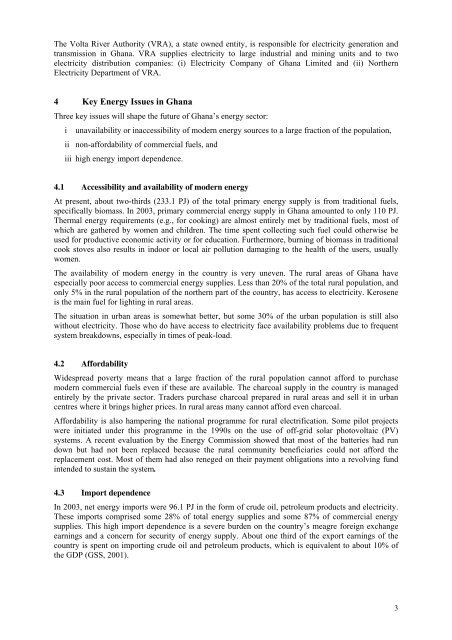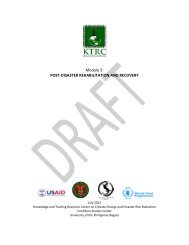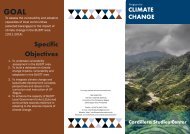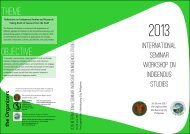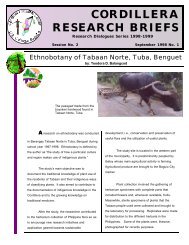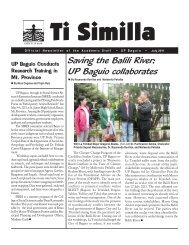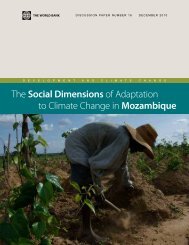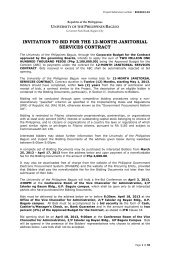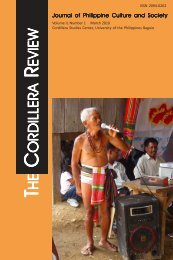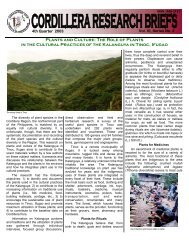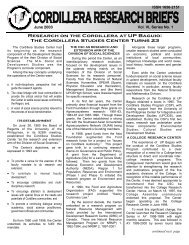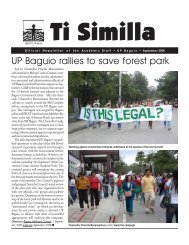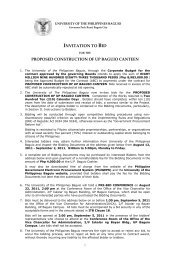Ghana - UNEP
Ghana - UNEP
Ghana - UNEP
- No tags were found...
You also want an ePaper? Increase the reach of your titles
YUMPU automatically turns print PDFs into web optimized ePapers that Google loves.
The Volta River Authority (VRA), a state owned entity, is responsible for electricity generation andtransmission in <strong>Ghana</strong>. VRA supplies electricity to large industrial and mining units and to twoelectricity distribution companies: (i) Electricity Company of <strong>Ghana</strong> Limited and (ii) NorthernElectricity Department of VRA.4 Key Energy Issues in <strong>Ghana</strong>Three key issues will shape the future of <strong>Ghana</strong>’s energy sector:i unavailability or inaccessibility of modern energy sources to a large fraction of the population,ii non-affordability of commercial fuels, andiii high energy import dependence.4.1 Accessibility and availability of modern energyAt present, about two-thirds (233.1 PJ) of the total primary energy supply is from traditional fuels,specifically biomass. In 2003, primary commercial energy supply in <strong>Ghana</strong> amounted to only 110 PJ.Thermal energy requirements (e.g., for cooking) are almost entirely met by traditional fuels, most ofwhich are gathered by women and children. The time spent collecting such fuel could otherwise beused for productive economic activity or for education. Furthermore, burning of biomass in traditionalcook stoves also results in indoor or local air pollution damaging to the health of the users, usuallywomen.The availability of modern energy in the country is very uneven. The rural areas of <strong>Ghana</strong> haveespecially poor access to commercial energy supplies. Less than 20% of the total rural population, andonly 5% in the rural population of the northern part of the country, has access to electricity. Keroseneis the main fuel for lighting in rural areas.The situation in urban areas is somewhat better, but some 30% of the urban population is still alsowithout electricity. Those who do have access to electricity face availability problems due to frequentsystem breakdowns, especially in times of peak-load.4.2 AffordabilityWidespread poverty means that a large fraction of the rural population cannot afford to purchasemodern commercial fuels even if these are available. The charcoal supply in the country is managedentirely by the private sector. Traders purchase charcoal prepared in rural areas and sell it in urbancentres where it brings higher prices. In rural areas many cannot afford even charcoal.Affordability is also hampering the national programme for rural electrification. Some pilot projectswere initiated under this programme in the 1990s on the use of off-grid solar photovoltaic (PV)systems. A recent evaluation by the Energy Commission showed that most of the batteries had rundown but had not been replaced because the rural community beneficiaries could not afford thereplacement cost. Most of them had also reneged on their payment obligations into a revolving fundintended to sustain the system.4.3 Import dependenceIn 2003, net energy imports were 96.1 PJ in the form of crude oil, petroleum products and electricity.These imports comprised some 28% of total energy supplies and some 87% of commercial energysupplies. This high import dependence is a severe burden on the country’s meagre foreign exchangeearnings and a concern for security of energy supply. About one third of the export earnings of thecountry is spent on importing crude oil and petroleum products, which is equivalent to about 10% ofthe GDP (GSS, 2001).3


